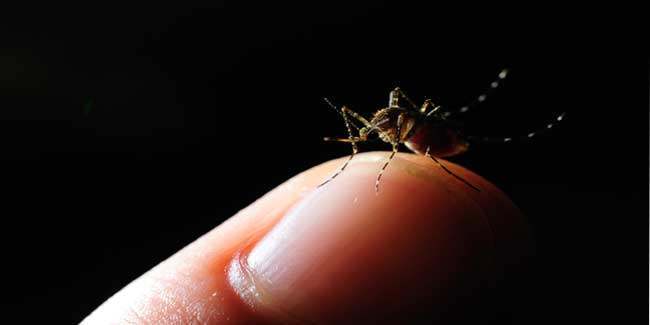
Dengue and dengue hemorrhagic fevers (DHF) are acute febrile diseases which occur in the tropics can be life-threatening. It is also known as break-bone fever, since it can be extremely painful.

Fever of sudden onset associated with headache, muscle and joint pains (myalgias and arthralgias, severe pain that gives it the nickname break-bone fever or bone crusher disease), distinctive retro-orbital pain and rash.The classic dengue rash is a generalized maculopapular rash with islands of sparing. A hemorrhagic rash of characteristically bright red pinpoint spots, known as petechiae can occur later during the illness and is associated with thrombocytopenia. It usually appears first on the lower limbs and the chest; in some patients, it spreads to cover most of the body. There may also be severe retro-orbital pain, (a pain from behind the eyes that is distinctive to Dengue infections), and gastritis with some combination of associated abdominal pain, nausea, vomiting coffee-grounds-like congealed blood, or diarrhea.
DHF - Dengue Hemorrhagic fever
Cases of DHF show higher fever, variable hemorrhagic phenomena including bleeding from the eyes, nose, mouth and ear into the gutand oozing blood from skin pores, thrombocytopenia, and hem concentration.
Dengue hemorrhagic fever is a leading cause of serious illness and death among children. There is no specific treatment for dengue, but appropriate medical care frequently saves the lives of patients with the more serious dengue hemorrhagic fever.
When Dengue infections proceed to DHF symptoms, DHF causes vascular leak syndrome which includes fluid in the blood vessels leaking through the skin and into spaces around the lungs and belly. This fluid loss and severe bleeding can cause blood pressure to fall, then Dengue Shock Syndrome (DSS) sets in, which has a high mortality rate.
DSS - DENGUE SHOCK SYNDROME
Dengue shock syndrome is defined as dengue hemorrhagic fever plus:
- Weak rapid pulse
- Narrow pulse pressure (less than 20 mm Hg)
- Cold, clammy skin and restlessness.
DIAGNOSIS
The diagnosis of dengue is usually made clinically
"The classic picture is high fever with no localizing source of infection, a rash with thrombocytopenia and relative leucopenia - low plateletand white blood cell count" A platelet transfusion may be indicated if the platelet level drops significantly (below 20,000) or if there is significant bleeding. The presence of melena may indicate internal gastrointestinal bleeding requiring platelet and/or red blood cell transfusion.
PREVENTION
Dengue fever is caused by Dengue virus a mosquito-borne flavivirus thus the only method of controlling or preventing the spread of dengue virus transmission is to combat the vector mosquitoes by maintenance of sanitary condition, hygiene, avoiding stagnant water, using mosquito repellents or mosquito nets.
Read more articles on Dengue
How we keep this article up to date:
We work with experts and keep a close eye on the latest in health and wellness. Whenever there is a new research or helpful information, we update our articles with accurate and useful advice.
Current Version
